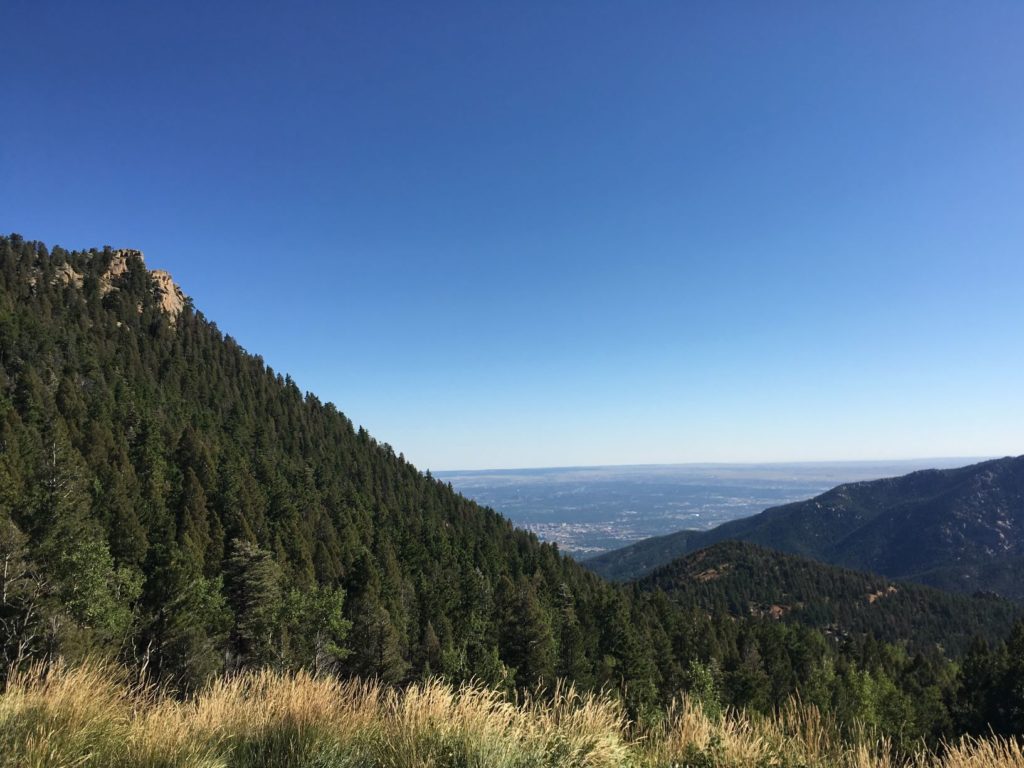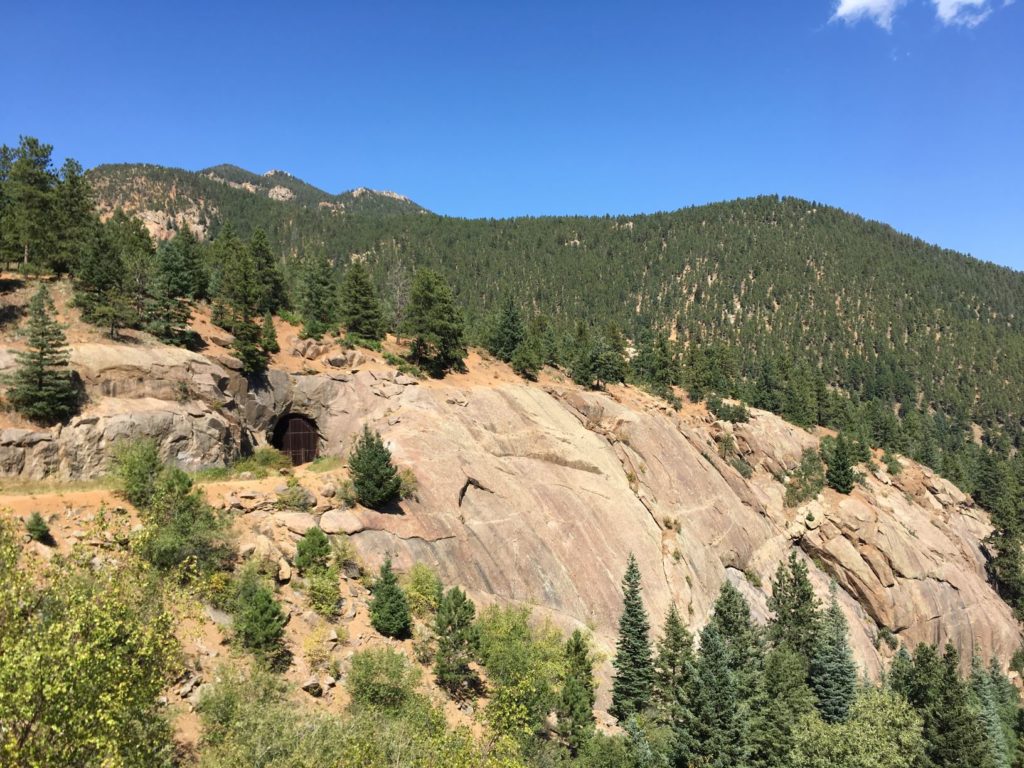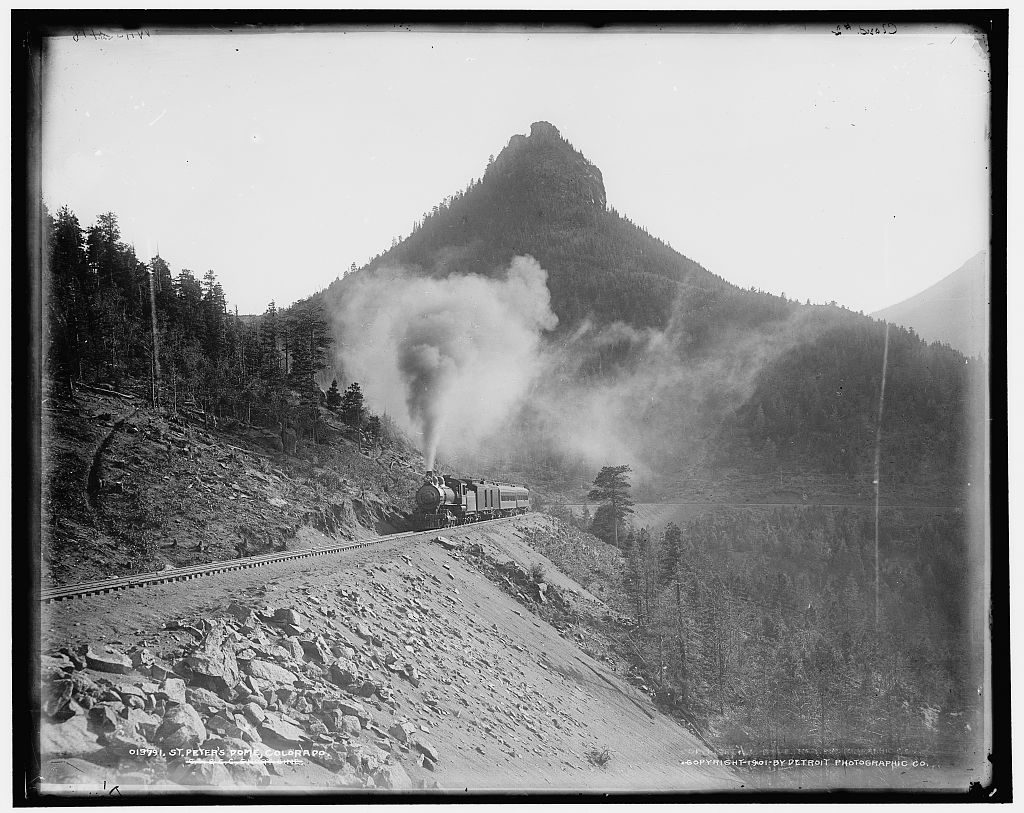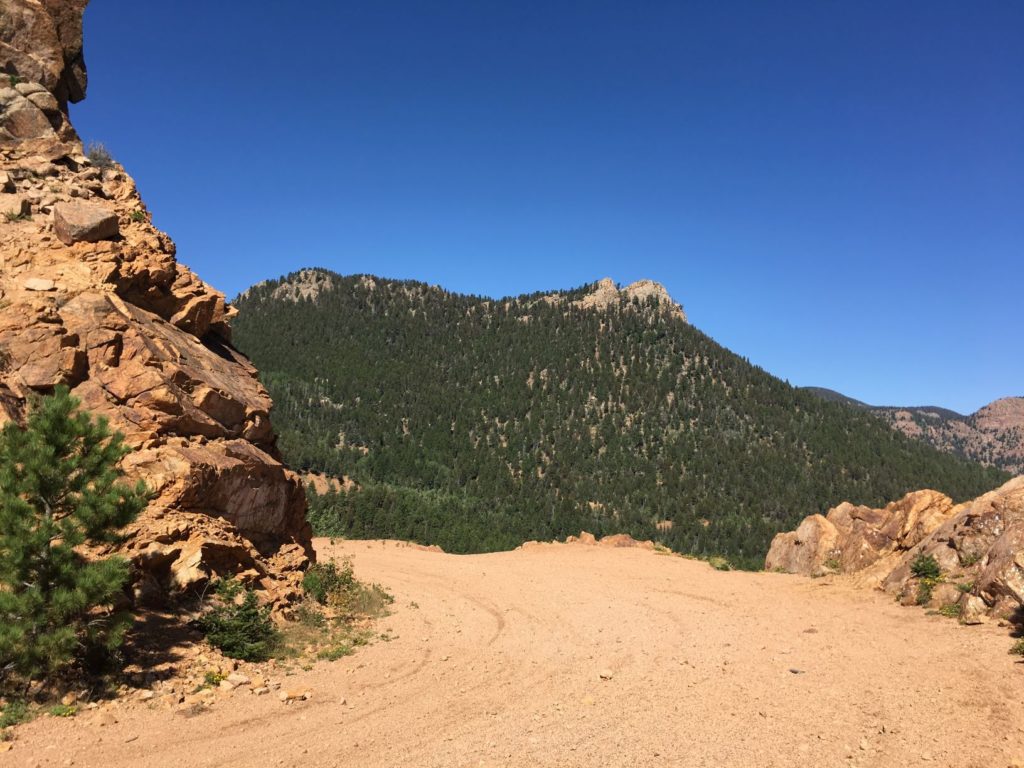The Gold Camp Road runs through the Rocky Mountains south of Pikes Peak in Colorado. For over a hundred years, it has been traveled by tourists, first on passenger trains and later in automobiles. The Colorado Springs & Cripple Creek District Railway was built around the turn of the twentieth century to bring gold ore down from the mines around Cripple Creek and Victor. By the 1920s, the railroad was out of business and the route was soon converted into an automobile toll road for tourists.


It remains a popular destination. We rented a couple of KHS mountain bikes from Challenge Unlimited and they drove us in their van up the unpaved and potholed Old Stage Road to St. Peters Dome, roughly halfway between Cripple Creek and Colorado Springs. Our driver dropped us off with a couple water bottles, a photocopy of a hand-drawn map, and a little backpack with a pump and repair kit, in case we got a flat tire. From there, it was all downhill.
The first eight miles or so are closed to automobiles, and we were riding on a Monday after the summer tourist season ended, so we had the gravel road to ourselves. We rode through two tunnels, stopping several times to take in the views. After about an hour and a half, we reached Tunnel #3. In 1988, this tunnel collapsed (which is why cars are no longer allowed), so we had to walk the bikes along a trail that goes over the tunnel. Below Tunnel #3 there was a parking lot, cars, and more hikers and bikers, but it was definitely not crowded. We continued downhill through more tunnels and rock cuts.


Eventually, we reached asphalt, which was a nice change after the bumpy, sometimes soft, gravel road. We still had a few miles of cruising to do before we arrived back at the bike rental company’s headquarters in the Old Colorado City section of Colorado Springs.
It only took a year to build the Colorado Springs & Cripple Creek District Railway, also known as the Short Line to Cripple Creek. The builders blasted out nine tunnels and built several timber trestle bridges. From the start, tourists were as important to the railroad as gold ore. When the railroad began operations in April, 1901, it ran four passenger trains a day to and from Cripple Creek. The railroad went out of business in 1920.

W.D. Corley purchased the railroad in 1922 and turned it into a scenic toll road for automobile-driving tourists. He removed the rails and built bypasses around the remaining timber trestle bridges. The Corley Mountain Highway opened in 1924, charging $1 for the privilege of driving your car over the road.


In 1939, the federal government took over control of Corley Mountain Highway, removing the tolls and renaming it the Gold Camp Road. The entire route remained drivable until 1988, when the tunnel collapse (no, a schoolbus full of children was not, as the internet would have you believe, crushed by this) led to the middle section of the road being permanently closed to automobiles. The Gold Camp Road was listed on the National Register of Historic Places in 1999.

Selected References for Gold Camp Road History:
National Register of Historic Places Registration Form, Colorado Springs & Cripple Creek District Railway/Corley Mountain Highway. 1998 Prepared by Ron Sladek.
Trains to cars to hikers: Gold Camp Road charts colorful past